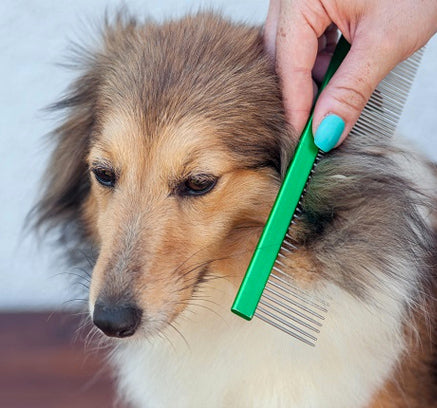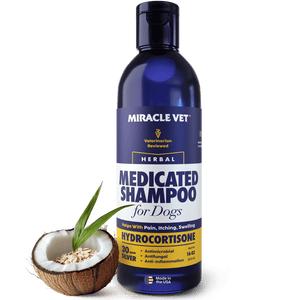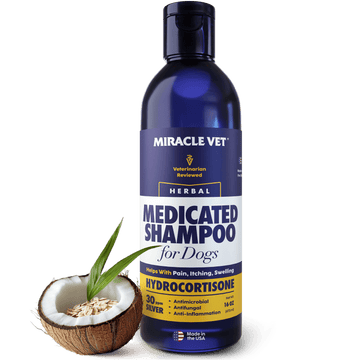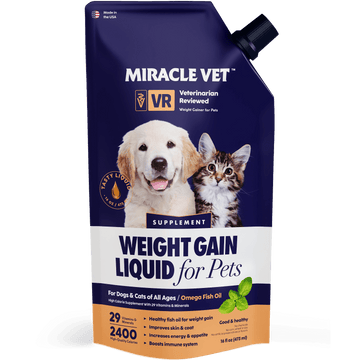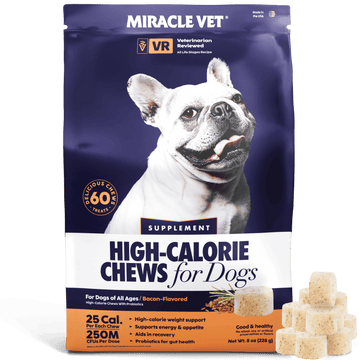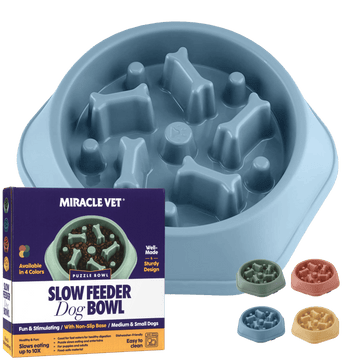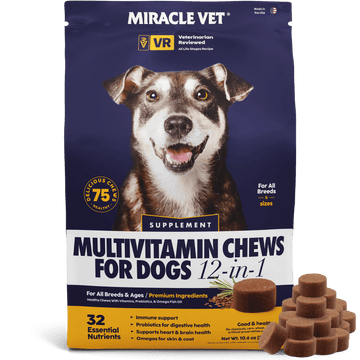Nobody likes finding out that their dog is experiencing hair loss. It prevents them from looking their best, and in some cases it also comes with skin irritation that could be really making your poor puppy miserable.
But what causes dog hair loss?
Is it preventable?
And what should you do about it?
We’ll help to answer some of those questions in this article. And it only makes sense to start with some of the causes of this condition.

Causes Of Dog Hair Loss
Before we get into the remedies, you might be wondering…what causes dog hair loss in the first place?
There are several potential causes, and depending on the cause of your dog’s hair loss, a different remedy might be called for. So here are some of the common causes of dog hair loss:
- Mites can cause hair loss in patches.
- Infections like ringworm can cause skin irritation that leads to hair loss.
- Trauma from chronic licking (called acral lick dermatitis) can damage hair follicles and cause secondary hair loss.
- Even allergies can create skin redness, itching, and yes—hair loss.
So now that you have an idea of what kind of issues can cause hair loss, let’s take a look at some of the things you can do to help stop hair loss in your dog.
1 Use A Humidifier
One of the most common problems with dog hair loss is dry skin & hair.
And one of the best ways to combat that? Get a humidifier!
A humidifier will keep more moisture in the air, soothing your dog’s skin and preventing that dry, itchy skin. (And the subsequent scratching that can make hair loss worse.)
The best place to put your humidifier is near your dog’s bed.
2 Try Apple Cider Vinegar
Apple cider vinegar is one of those old home remedies that people have been using for many, many years.
So what makes it such a great thing to apply to your dog’s skin & hair?
Well, apple cider vinegar’s acidic nature makes it a natural antifungal & antibacterial. That means you can apply it to any irritated skin to help clean out any of the bad stuff.
You can either dab it on your dog’s skin, or try adding some to their bath and use it to refresh their skin all over their body.
3 Try Natural Medicated Bathing
A medicated shampoo might be the solution you need. Ingredients like aloe vera, oatmeal, and tea tree oil can work wonders for irritated skin and hair loss. These natural remedies reduce inflammation and create the perfect environment for new hair growth.
Simply bathe your dog weekly with lukewarm water and massage the medicated solution into problem areas. Let it sit for 5-10 minutes before rinsing thoroughly. Many pet parents see amazing results after just a few baths - less scratching and visible hair regrowth where patches used to be!
Recommended: Medicated Dog Shampoo for Yeast Infection & Allergies - $21.99
4 Brush Your Dog
It’s such a simple thing, but using a brush on your dog can do wonders for their hair!
The reason is pretty simple. Your dog’s skin has natural oils on it, which help to keep the skin moisturized and protected. But that oil doesn’t always manage to make its way onto the coat.
But brushing your dog helps to distribute those natural skin oils all over the fur, keeping your dog’s hair looking healthier and shinier.
This tip really works, but you usually have to do it on a regular basis to get the benefit.
5 Give Lemon Juice A Try
Lemon juice can be used much like apple cider vinegar. Both are acidic liquids that can help fight against bacteria and restore the pH of any problem skin areas.
(Keep in mind, it’s often the problem skin underneath the hair that’s causing the hair loss. Fix the skin, and in many cases you fix the hair loss.)
6 Use Topical Olive Oil
We all know that olive oil is good for us, when we get it in our diet.
But did you know it can also help soften the skin when applied topically?
If your dog has patches of dry skin, try applying a little olive oil to those rough patches. Olive oil is great at moisturizing dry, rough skin.
And it even has another, secondary skin benefit: it can smother mites that could be causing your dog’s hair loss!
Simply massage a small amount of oil into your dog’s skin. And be careful not to let them sit on any good furniture in the meantime.
7 Eliminate Allergens From The Diet
Many people are surprised to learn that allergies can be a fairly common cause of dog hair loss. Allergies can cause all sorts of problems, from inflammation to irritation, which can ultimately lead to dry skin and hair issues.
The solution here should be pretty self-evident: you’ll have to remove the allergens.
In some cases that can be tough—like with seasonal allergies (pollens, etc.). But in many other situations you can at least help improve the situation. Make sure any common allergies (things like mold) are cleaned up.
It’s also a really good idea to make sure your dog food is healthy and free of common allergens like wheat, soy, and corn.
A bonus tip: Use Homemade Antifungal Rinses
Hair loss from fungal problems like yeast infections or parasites like mites and ringworm can be treated at home. These conditions often cause circular bald spots and intense itching, worsening hair loss.
Try making a simple rinse with one part hydrogen peroxide, one part warm water, and a few drops of gentle shampoo. Or use diluted apple cider vinegar (one part vinegar to three parts water) as a weekly after-bath treatment. These homemade solutions create an environment where problem-causing organisms can't survive, allowing hair to grow back naturally. Apply to affected areas 2-3 times weekly until new hair appears, typically within 2-4 weeks.
Recommended: Antifungal Medicated Dog Shampoo for Yeast Infection Treatment - $21.99
